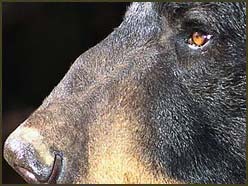With the exception of Wyoming and Idaho, baiting is illegal in western states (it’s permissible for bowhunters in Utah, however). Though effective, baiting requires a great deal of time and effort-two qualities that nonresidents generally don’t have. Given the time constraints, it’s better to use spot-and-stalk techniques.
Where legal, spring hunting is generally more productive than fall hunting, since bears are usually more visible as they feed in open areas where the vegetation is greening up after the long winter. That’s not to say more bears are taken in the spring; it’s simply easier to spot them.
My choice for spring bear is western Montana. I prefer hunting areas that have been logged, where bears feed in clear-cuts. Plenty of roads run through this country, most of it National Forest land, but many roads are locked after logging operations are complete. I see that as a plus, because I prefer to hunt on foot. On the other hand, hundreds of miles of roads remain open for those who prefer spotting from vehicles.
I park my pickup at a gate and walk and glass all day. On a good day I may see 6 to 10 bears, but most are a long way off, sometimes in inaccessible spots. Although hungry bears might be seen all day, the last hour before dark is the best.
Though all of the timbered country in western Montana has bears, my favorite places to hunt are the Beaverhead, Deerlodge and Lolo national forests.
